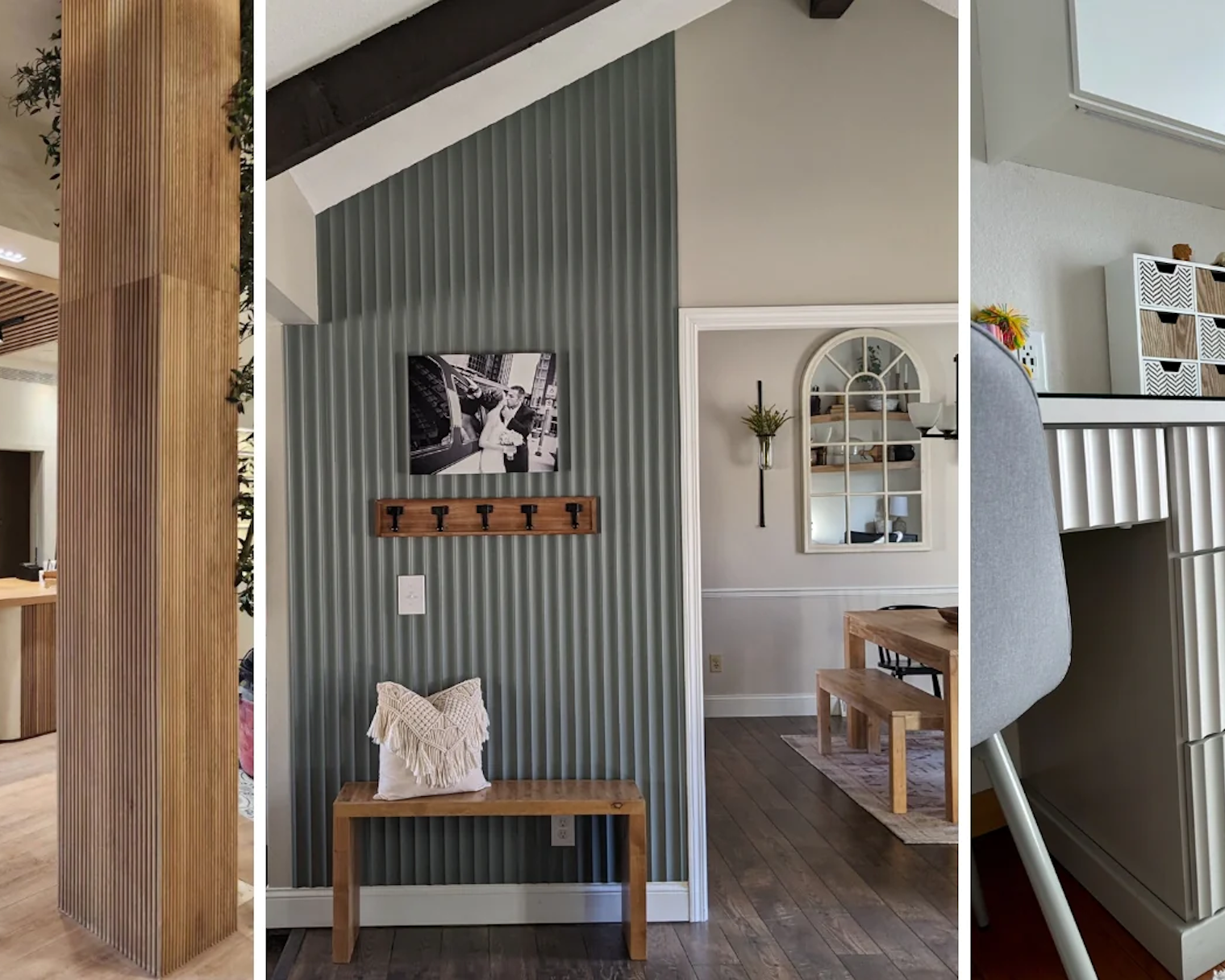subscribe for exclusive discounts
subscribe for exclusive discounts
Accessories
Check out our full lineup of yoga accessories to help you with your daily meditation practice and fitness goals...
Try our new Cork Yoga Brick for soft but solid support
Check out our full lineup of yoga accessories to help you with your daily meditation practice and fitness goals...
Shop

The History of Wall Paneling
July 21, 2023 3 min read
How Wood Paneling for Walls Has Taken The World By Storm
As a society, we have found ways to decorate our environments since the beginning of time. From pyramids to colosseums, castles to skyscrapers - art and design have combined forces to create ever-lasting styles we still use to this day. Wall paneling is no different!
This interior design addition has come a long way and has a surprisingly vast history. When we think about wood wall paneling, a ‘70s style slat design likely comes to mind. But where did it really come from? And how has it grown into the innovative ways we use wall panels today?
Wood Wall Paneling in The Gothic Period
Records of wood paneling for walls date back as far as ancient Greece, Japan, China, and Rome. While at first wall panels were used for practical purposes, like insulation and protection, it wasn’t until the Gothic period that we began to see the creative use of paneling. This is when ornately decorated paneling, particularly in the homes of wealthy individuals, hit peak popularity.
Throughout this time period, wall panels had several different stylistic uses depending on the region. Tudor and Elizabethian styles were popular, and wall panels were often skillfully carved to mimic folded linen in an opulent design. You would also frequently see material similar to wood wall paneling on ceilings during the Italian Renaissance.
Wood Wall Paneling in the Victorian Era
Nowadays, wainscotting refers to the decorative treatment on the lower part of a wall, but this is actually derived from one of the most popular eras of wood wall paneling. This type of wall paneling grew with great popularity in the Victorian era due to its simple design and look. Wall panels served well in this period due to the popularity of stripes and simple, geometric designs. This era also began the exploration of different wood materials for wall panels.
The ‘70s Revival of Wood Wall Paneling
Although wood paneling never took to the back burner in home decor, it truly found its way into the light in the ‘60s and ‘70s. Remember the synthetic panels on our grandma’s basement walls? Maybe you even still have remnants of it in your home today!
This type of paneling took the world by storm due to its affordability and how easy it was to install over old plaster walls or in lieu of messy sheetrock. Plus, it looked pretty groovy with a shag rug.
Trends tend to circle back around, and ‘70s style panels are definitely having a moment - but with some seriously modern upgrades.
The Wood Wall Paneling Comeback of the 21st Century
Today, wall panels are everywhere once again! The creative bounds are endless and interior design has only proven the timeless use of wood wall paneling.
Regardless of the ways we have used wall paneling throughout history, now, it’s a fresh and inviting way to create a unique space. Slat paneling is even more popular than it once was in the Victorian era, and now we have even more styles to choose from. Where paneling for walls was once a sign of elite society or grandmother chic, now it can bring texture and intrigue to a seemingly plain space for an affordable price!
Today, we have access to seemingly endless materials to customize our spaces in whatever ways we please. And yet, we often feel drawn to timeless design elements like wood wall paneling. This speaks not only to the versatility of this material, but also to our ability to modernize even the most classic of styles. The technological advancements of MDF and other wood materials have made wall panels more affordable, while still being durable, resilient, and stylish.
Add Wood Wall Paneling to Your Home
As styles evolve and trends continue their cycles, one thing remains true: wood wall paneling always has a place in interior design.
The desire to customize our spaces is human nature, and we’re lucky enough to have tons of options to choose from in this day and age. Installation is easier now than ever, too. When you purchase wood wall paneling you should receive detailed instructions from the manufacturer to easily measure and install the panels.
Whether you’re looking to freshen up your home, make a statement, or jazz up some built-ins, wall paneling can truly inspire. Find a wood wall paneling company near you to customize your space and bring a little bit of history into your home.
Save 5% when you subscribe
Sign up below!
